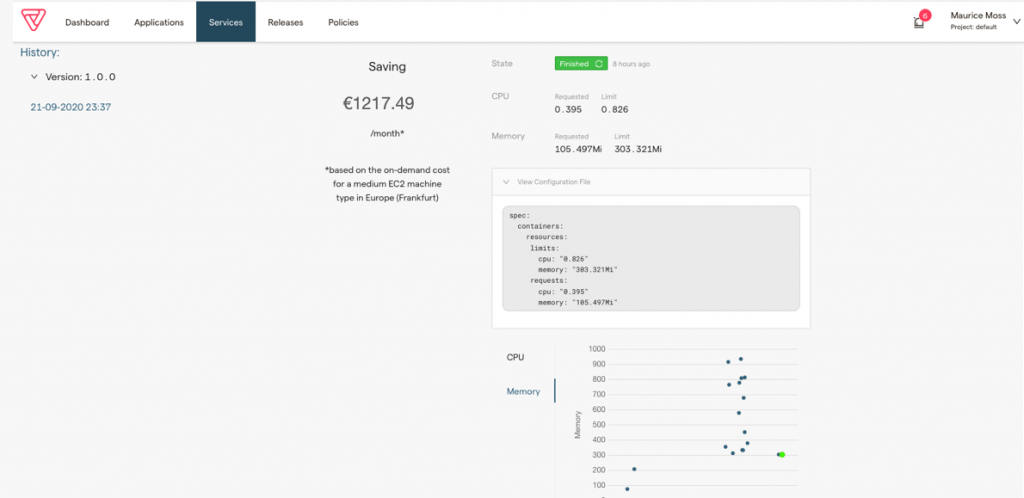Vamp Applies AIOps to Microservices on Kubernetes Clusters
Vamp, a provider of a platform based on machine learning algorithms for automating software release management, this week announced it has added a tool that surfaces recommendations to optimize Kubernetes environments based on service levels that need to be attained by microservices-based applications.
Company CTO Olaf Molenveld says Vamp Continuous Cloud Optimizer makes use of machine learning algorithms to monitor all the microservices that make up an application. That application-centric approach is required because microservices are loosely coupled in a way that often results in Kubernetes clusters allocating additional resources to one microservice at the expense of other microservices, says Molenveld.
In the absence of a tool to ensure overall application performance is maintained, Molenveld says IT teams will find themselves continually trying to discover where to make infrastructure adjustments. The machine learning algorithms employed within the Vamp Continuous Cloud Optimizer continuously monitor microservices to immediately identify contention issues, he notes.
Of course, IT organizations have been throwing hardware at performance issues for decades. At a time when many organizations are under pressure to reduce costs, Vamp Continuous Cloud Optimizer can reduce Kubernetes infrastructure costs by 40% by employing algorithms to rightsize infrastructure, according to the company.
In general, Molenveld advises IT teams to be judicious when it comes to deploying microservices. Any application made up of five to 20 microservices can be reasonably maintained. Applications made up of 50 or more microservices are simply accidents waiting to happen, he says.
IT teams should also take care to understand the problems they are trying to solve using microservices. There are some classes of applications involving, for example, transaction processing that are better served by monolithic applications, Molenveld notes. Longer-term, many application environments will be based on hybrid architectures where microservices revolve around a core monolithic application, he says.
Regardless of architecture, application environments are becoming too complex to manage without help from machine learning algorithms to optimize IT operations, also known as AIOps. IT teams will still be needed to act on the recommendations surfaced by tools such as Vamp Continuous Cloud Optimizer, but the time required to rightsize a Kubernetes environment should be reduced substantially.
Armed with those recommendation microservices, it should become less intimating for IT operations teams to manage across IT environments that are becoming more distributed by the day. It’s not unheard of for IT teams to roll back a microservices-based application simply because it proved too difficult to manage.
At the same time, irrational microservices exuberance can be just as problematic. Many developers will simply assume microservices provide a better way to build software no matter what the use case, only to discover the project was doomed from the start.
IT teams may not always trust the recommendations made by an AIOps platform. However, over time those recommendations become more accurate. The more complex the application environment, however, the longer that can take.





